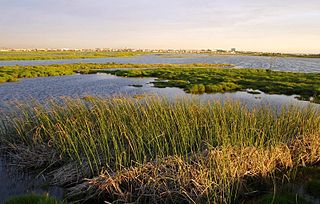| Milnerton Racecourse Nature Reserve | |
|---|---|
| Formerly "Royal Ascot Conservation Area" | |
| Location | Milnerton, Western Cape, South Africa |
| Coordinates | 33°51′37″S18°30′30″E / 33.86015°S 18.50823°E |
| Area | 19 hectares (0.19 km2) |
| Governing body | City of Cape Town |
| www | |
The Milnerton Racecourse Nature Reserve is a lowland conservation area located in the City of Cape Town, South Africa.
Contents
- Location
- History
- Management
- Environmental Management Committee
- Access
- Biodiversity
- Geology and vegetation
- Water and fauna
- See also
- References
- External links
It forms part of the greater Table Bay Nature Reserve, proclaimed in June 2012.


